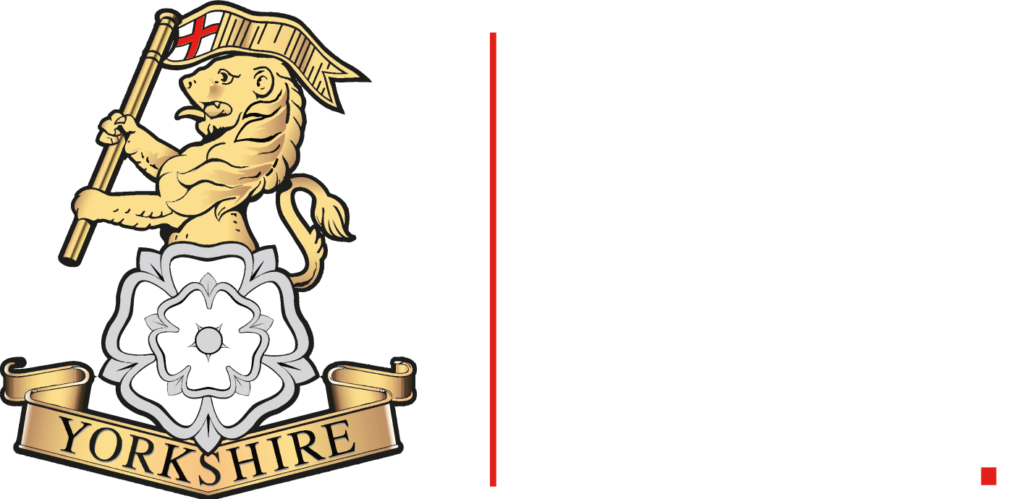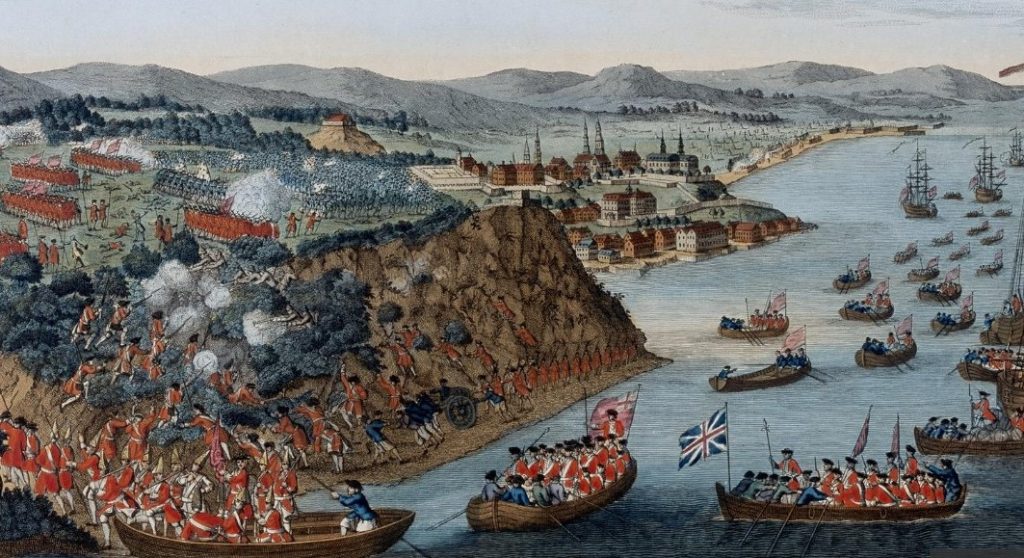The 15th Regiment of Foot, commanded by Lieutenant Colonel The Honourable James Murray, took part in the conquest of Canada in the Seven Years’ War (1756-1763). By 1758, the Army captured Louisburg but was not ready to move further along the St Lawrence River. On 27th May 1759, the British Army landed on the Isle of Orleans a few miles below Quebec. The sight that met General James Wolfe was not encouraging. Quebec is situated on a rocky headland lying between the St. Lawrence and the Charles Rivers. It was well fortified and garrisoned by a French Army of 15,000 men. An early attempt by the line Regiments’ Grenadier Companies failed. However, General Wolfe praised the Grenadiers of Amherst’s (15th Foot) and the Highlanders (78th Foot), behind whom the repulsed Grenadiers had reformed. He said that they – “alone, by soldier-like and cool manner in which they formed would undoubtedly have beaten back the whole Canadian [French] Army if the enemy had ventured to attack them”.
It was not until September that General Wolfe decided upon a plan.
At around 2 a.m. on 13th September, the lead brigade dropped silently down the St Lawrence. An officer of Fraser’s Highlanders replied in French to a shore sentry’s challenge and a successful landing took place about two miles above Quebec. The lead troops dragged themselves up the cliffs by the roots and branches of trees and rushed the French post on the top. By the morning the main force, of 4,500 men, assembled on the Heights of Abraham. The 15th Foot was on the left, echeloned back to protect the open flank. The French attacked at 9 a.m. with 7,500 men. First came fire from sharpshooters and then the whole line engaged, the British held their fire until the French were within 40 metres and then met them with musket fire.
Firing two musket balls per barrel had a devastating effect and described as ‘the most beautiful volley in the history of warfare’. The British line advanced with the bayonet and the French troops broke and fled towards Quebec. Sadly, musket fire mortally wounded General Wolfe. He lived long enough to hear that victory had been won and secured his place in military history. Within five days, Quebec surrendered and Colonel Murray appointed Governor. The conquest led to the opening up of New France and the subsequent capture of Montreal. In 1763, the signing of the Treaty of Paris sealed a famous campaign victory.

